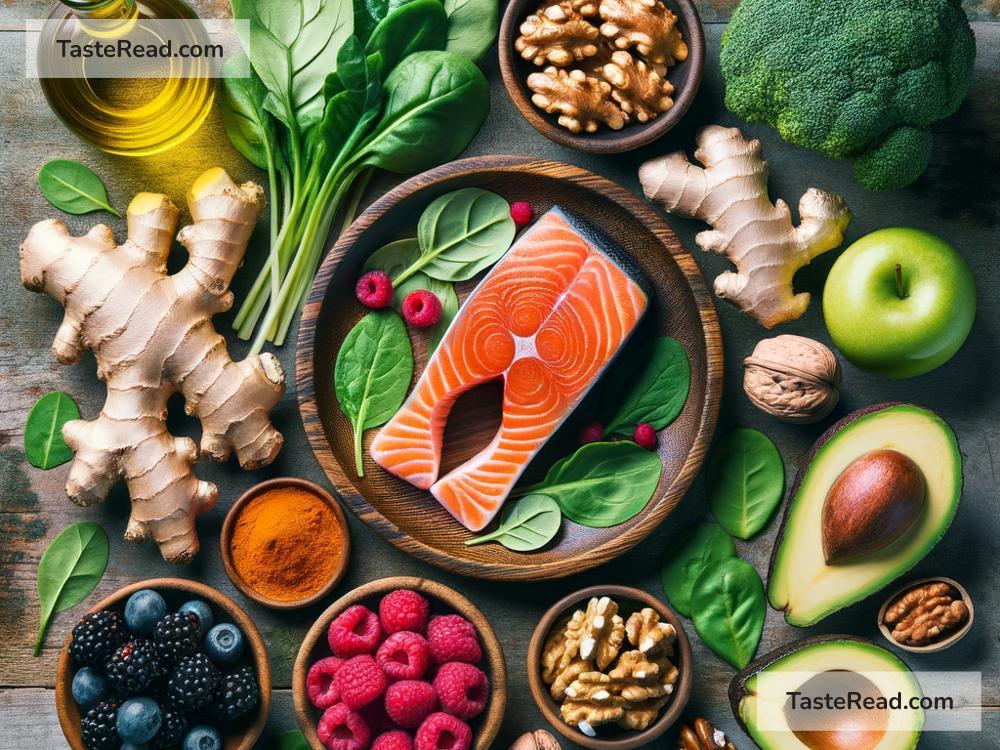Foods for Reducing Chronic Pain: Eat Your Way to Feeling Better
Chronic pain is something millions of people deal with every day. It can come from conditions like arthritis, fibromyalgia, back problems, or injuries that haven’t fully healed. While medications and therapies can help, what you put on your plate can also make a big difference. Certain foods have natural properties that may reduce inflammation and pain in the body. Choosing the right foods can support your health and help you feel better over time.
In this blog, we’ll explore some simple but powerful foods to include in your diet if you’re dealing with chronic pain.
1. Fatty Fish: Salmon, Mackerel, and Tuna
Fatty fish like salmon, mackerel, and tuna are rich in omega-3 fatty acids. These healthy fats fight inflammation in the body, which is often a root cause of chronic pain. Studies have shown that omega-3s can help reduce joint pain in people with rheumatoid arthritis.
If you’re not a fan of fish, you can try omega-3 supplements or include plant-based options like walnuts, flaxseeds, and chia seeds in your meals.
2. Colorful Fruits: Berries, Oranges, and Cherries
Fruits like strawberries, blueberries, oranges, and cherries are packed with vitamins, antioxidants, and compounds that help reduce inflammation. For example:
- Berries are full of antioxidants called anthocyanins that fight inflammation and protect your cells from damage.
- Oranges are rich in vitamin C, which helps your body produce collagen, a protein that strengthens tendons, ligaments, and joints.
- Cherries, especially tart cherries, are known to reduce muscle pain after exercise.
Snack on these fruits or add them to smoothies, yogurt, or salads.
3. Leafy Greens: Spinach and Kale
Leafy greens like spinach and kale are nutritional powerhouses. They contain vitamins, minerals, and plant compounds that help your body deal with inflammation and pain. Magnesium, found in these vegetables, is especially helpful for muscle and nerve function. Low magnesium levels can increase sensitivity to pain, so eating more spinach, kale, or other greens might help.
You can sauté leafy greens, throw them into soups, or blend them into smoothies for an easy way to enjoy their pain-relieving benefits.
4. Turmeric: The Golden Spice
Turmeric is a bright yellow-orange spice often used in Indian cooking, but it’s also famous for its health benefits. It contains curcumin, a compound that has strong anti-inflammatory and pain-relieving properties. Many people find turmeric helpful for reducing pain from arthritis and other inflammatory conditions.
To make your turmeric most effective, pair it with black pepper, which helps your body absorb curcumin better. You can sprinkle turmeric into soups, stews, or scrambled eggs, or mix it into warm milk for a soothing drink.
5. Nuts and Seeds: Almonds and Flaxseeds
Nuts and seeds are great sources of healthy fats, vitamins, and minerals that help keep inflammation under control. For example:
- Almonds are rich in vitamin E, which supports joint health and reduces pain.
- Flaxseeds contain omega-3s, which can ease pain caused by inflammation.
Enjoy a handful of nuts as a snack, add seeds to your oatmeal, or sprinkle them on salads to get their health benefits.
6. Olive Oil: A Healthy Cooking Fat
Swap out processed oils for extra virgin olive oil in your cooking. Olive oil contains a compound called oleocanthal, which has anti-inflammatory properties similar to ibuprofen. It can help reduce inflammation and joint pain over time.
Use olive oil in salad dressings, drizzled over cooked veggies, or as your main cooking oil for added flavor and pain relief.
7. Ginger: A Spicy Pain Fighter
Like turmeric, ginger is a root with powerful anti-inflammatory effects. It can relieve muscle soreness, menstrual cramps, and joint pain. Ginger works by blocking certain pain-causing compounds in the body.
You can add fresh grated ginger to teas, stir-fries, or soups, or use ground ginger in baking recipes.
8. Whole Grains: Brown Rice, Oats, and Quinoa
Whole grains like brown rice, oats, and quinoa are high in fiber, which may help reduce inflammation in the body. Processed grains, like white bread and pasta, can sometimes increase inflammation, so swapping them for whole grains could make a big difference.
Start your day with a bowl of oatmeal or serve your meals with brown rice or quinoa instead of white rice. Every small change counts!
9. Green Tea: A Soothing Drink
Green tea is a popular beverage known for its antioxidant and anti-inflammatory benefits. Drinking green tea regularly may ease pain and stiffness, especially in people with arthritis. It’s also a great way to stay hydrated, which can help your body fight pain naturally.
Aim for 1-2 cups of green tea per day. You can drink it plain or add a little honey for extra flavor.
10. Dark Chocolate: Moderation is Key
Good news for chocolate lovers! Dark chocolate (with at least 70% cocoa content) contains antioxidants that reduce inflammation and boost your mood. Eating a small amount of dark chocolate can help with pain while satisfying your sweet tooth.
Just be careful not to overdo it—too much sugar can increase inflammation.
Putting It All Together
Reducing chronic pain through diet isn’t about fad foods or quick fixes; it’s about choosing simple, nutritious options that fight inflammation and support your health. Focus on building meals with fatty fish, colorful fruits, leafy greens, whole grains, and healthy fats. Add flavorful spices like turmeric and ginger, sip on green tea, and enjoy a little dark chocolate here and there.
Remember, a healthy diet works best alongside other treatments like exercise, stress management, and proper medical care. Always talk to your doctor before making big changes to your diet, especially if you have health conditions.
Start adding these pain-fighting foods to your meals and see how your body feels. Small changes can lead to big improvements over time!


